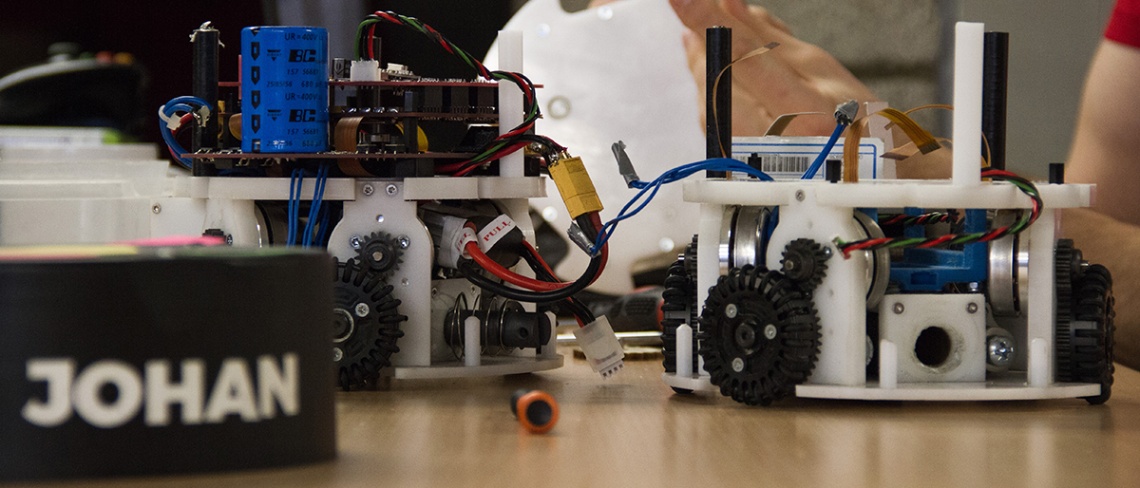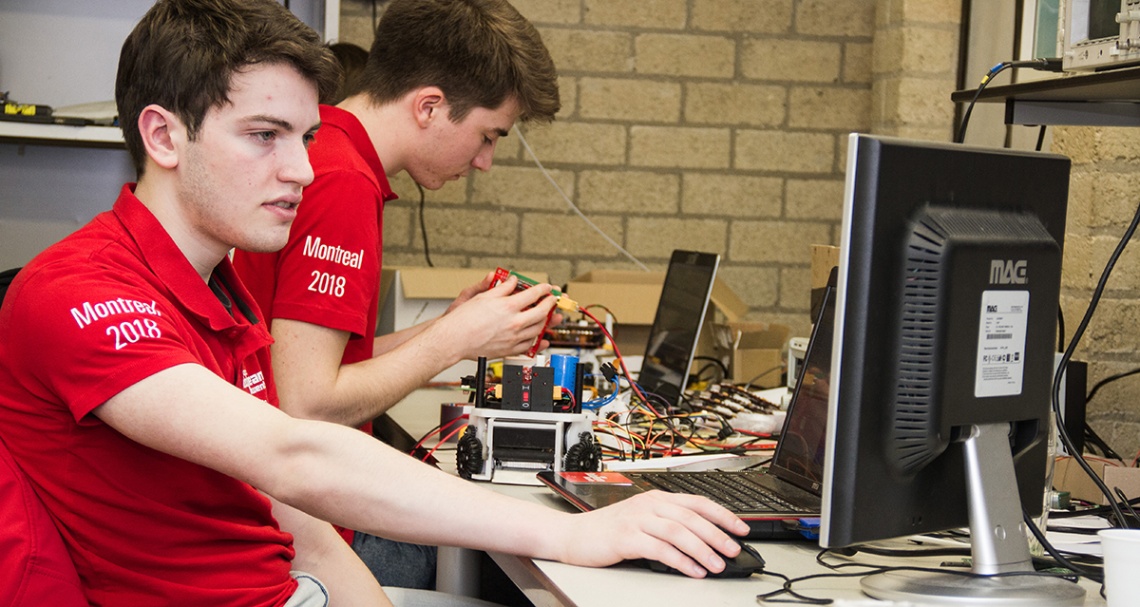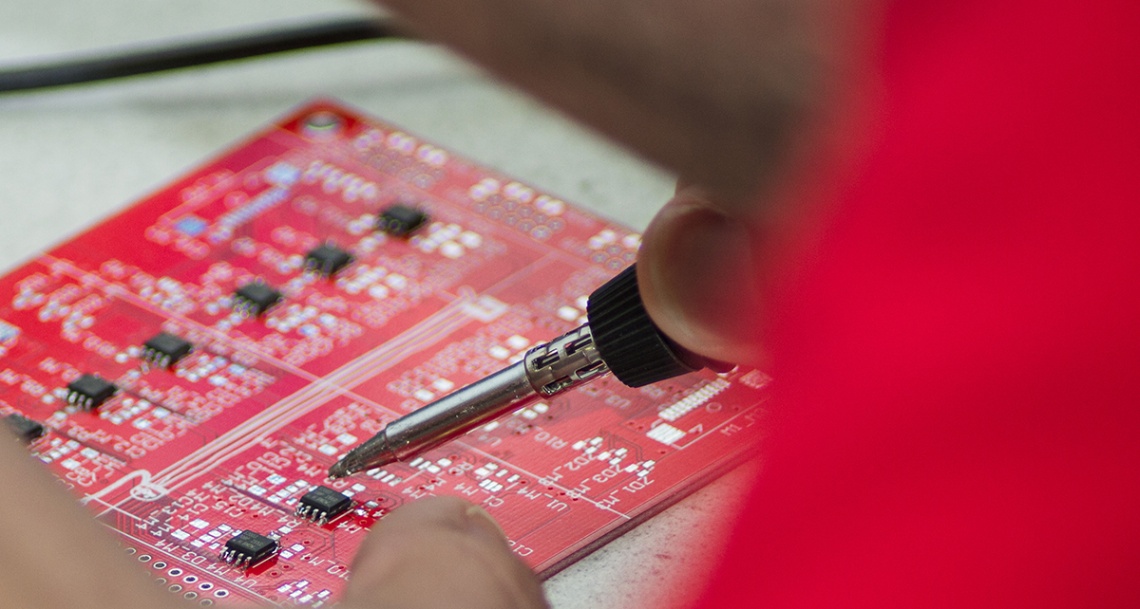Last year Nexperia became the main industry sponsor for RoboTeam Twente, and this year with some helpful insights from TeamNexperia they are looking to take on the big boys of the Robocup 2018 Small Size League.
We’ve all seen the movies where the robots take over the world. A lot of research and development is being undertaken in this area. You just need to look at some of the advances in machine learning and artificial intelligence (the ability to perform tasks such as visual perception and decision-making), and clearly the ubiquitous processing power now available has certainly had a significant impact.
But robotics and advanced mechatronics aren’t just about processing power. In fact, if you look at the aims of the Robocup Federation to field a team of robots capable of winning against the human football World Cup champions by 2050, then you may just get an idea of how much work is still needed to achieve this goal. Movement, spatial awareness, team work and the ability to pass and shoot are just some of the skills robots still need to master before they think about taking over the football field let alone the world.
Nexperia gets behind RoboTeam Twente
Last year Nexperia became the main industry sponsor for the University of Twente’s RoboTeam. In their first year this multidisciplinary team of Bachelor and Master students managed to design, build and get a 6-robot team playing in the autonomous and strategic Small Size League. In this league the robots can be no larger than 18 cm in diameter and no higher than 15 cm, and they rely on information provided by a vision system incorporating four cameras installed above the field and communicate with each other wirelessly. The team came a very reputable 14th out of 20 and received a lot of positive feedback on how far they had advanced in a single year.

This year’s team have accepted the weighty baton that has been passed onto them, to take the development of the robot further and even if they don’t win Robocup 2018 in Montréal, Canada to at least finish in the top 10. Talking to the team, you begin to realize the task they have taken on. Essentially they have stripped the original design right back to basics and are reworking practically every part of the robot. And with format changes to the Small Size League, they are also hoping to participate in the top division which will use an 8-robot team and a slightly bigger football field.

Combining speed with power
That means all the different disciplines have their own challenges in the redesign. The mechanical team is trying to squeeze all the different components into a very tight space, while also giving the robots a few additional ball control skills. Getting the tactics right and giving each individual robot (Goalkeeper, Defenders, Strikers) the control and skills they need, is down to the software team. Last, but certainly not least, the electronics team is going for an ambitious redesign of the circuitry to handle the power and currents running through the robots while also trying to keep the existing robots match fit for events like the Nexperia demo team at embedded world.

What to do with all that energy
One of the biggest challenges the electronics team currently faces is around power coupling. With battery charging, multiple wheel motor drives and a large capacitor-based solenoid ‘kicker’ system, in close proximity to sensitive control ICs, handling all the power requirements has certainly been a steep learning curve from academic understanding to practical implementation. Luckily for the team, being able to draw on the experience and knowledge of TeamNexperia, as well as getting their hands on key components, means that RoboTeam Twente are really hopeful they can take on the big boys in the Robocup 2018 Small Size League.
From a product perspective the team are already using a number of key Nexperia components. For efficient motor driving each wheel uses six PSMN012-60YS MOSFETs, while the charger and kick board includes various diodes and transistors (1PS76SB40, BC807, BC847, 2N7002). And given the power coupling issues the team face, they looking to incorporate MMBZ12VDL transient voltage surge protectors.
